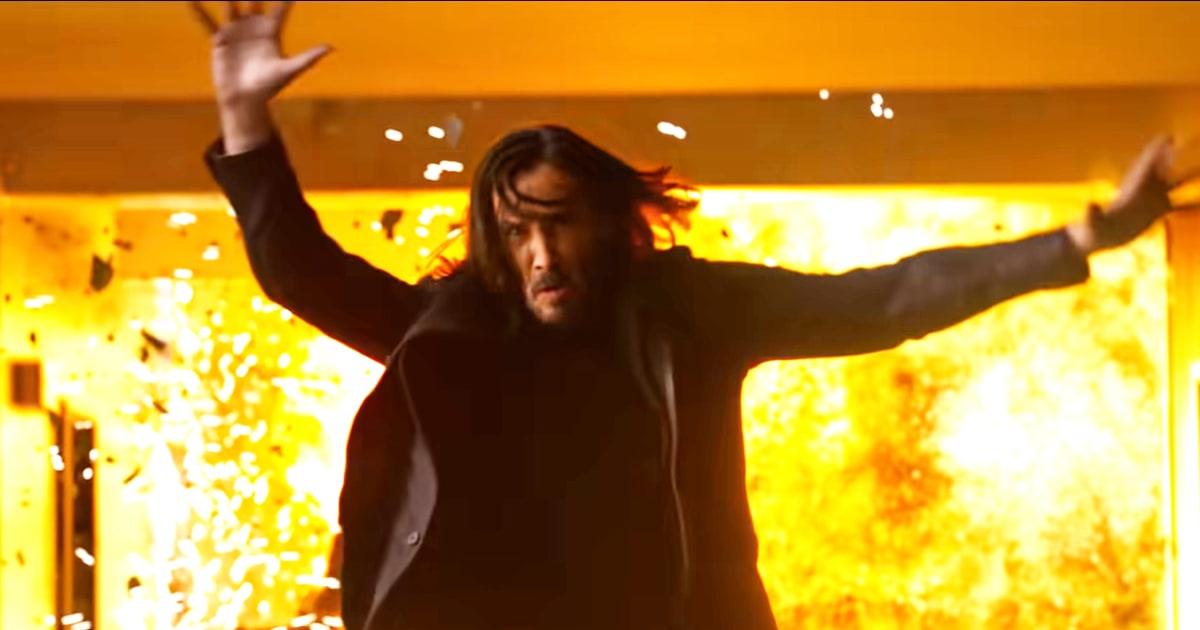
How do you reboot “The Matrix?” The original film by the Wachowskis was a once-in-a-generation work when it was released in 1999. The idea that the “real” world was actually a computer simulation merged cyberpunk science fiction and “chosen one” narrative in a way that felt fresh. Its slow-motion fight sequences and Americanized wire-fu changed the way action films looked going forward; its characters and tropes become an indelible part of the pop culture fabric.
The sequels that followed, “The Matrix: Reloaded” and “The Matrix: Revolutions,” became bogged down by the franchise’s own pop philosophy intellectualism. And yet, the new sequel, premiering 22 years later, has taken us back to the Matrix — and redeemed it.
The new sequel, premiering 22 years later, has taken us back to the Matrix — and redeemed it.
Like any story that reaches pop culture saturation, “The Matrix” represented whatever fans wanted it to represent. The original film was a parable that worked on multiple levels, including as an allegory for the trans experience of its directors, the Wachowski sisters. As movies brought dinosaurs to life and took viewers into realistic fantasy worlds, and the internet allowed people to dive into alternative facts, “the Matrix” questioned our original reality. But those lessons quickly took on a life of their own, with tropes from the movie, like “red pilling,” becoming associated with groups like the alt-right. The story has accumulated a lot of baggage in two decades.
And yet, given Hollywood today it was perhaps inevitable that a return to “The Matrix” would occur. Luckily, original director Lana Wachowski is the one revitalizing it. She takes back the narrative in “The Matrix: Resurrections,” an ingenious meta-commentary on our current entertainment landscape that is also a blueprint for how to properly raise such an iconic story from the dead.
As before, our hero, Neo, aka Thomas Anderson (Keanu Reeves), is once again trapped in the Matrix. His new world includes a blue pill-prescribing therapist (Neil Patrick Harris), an intense business partner (Jonathan Groff) and an unattainable Trinity (Carrie Ann Moss), now married with children and renamed Tiffany. His memories of the past have been rewritten: “The Matrix” was a video game, one Anderson published in 1999 to critical and commercial success. The video game trilogy is now a mainstay of pop culture, and 20-plus years later, it’s time to reboot. Anderson is told Warner Bros. will do it with or without him, so he better get on board. But the experience begins triggering old memories, until his ability to discern reality from fiction — or fiction from fiction — reaches a crisis point.
It is not a spoiler to reveal Anderson will eventually escape again. The “outside the Matrix” parts of the original trilogy were always the weakest — the Wachowskis were fascinated by the real world as fiction but never cared much about building out the fiction of their “real” world. This new film course corrects some in that regard, but not much. The point is always to get back to the Matrix and defeat the evil lurking inside.
And speaking of getting back to the Matrix, by making “The Matrix” part of the Matrix, the resulting meta-conceptualism is either brilliant or self-indulgent. Either you will whoop at the scene where one of the film trilogy’s least effective villains returns to rant incoherently at how blockbusters have destroyed original storytelling, or you will feel highly insulted.
But the real story hidden inside this inception-like nesting doll is that “The Matrix” no longer offers a pessimistic view of humanity. Sure, there will always be those who wish they’d taken the blue pill and stayed blissfully unaware, but as the film reminds us, choice is an illusion when facts are irrefutable. That doesn’t make the act of choosing any less meaningful to ourselves and the reality we’ve decided to live in.
And “Resurrections” believes that given the choice between the real world and the Matrix reality, people will make the right choice to live free and face the future, whatever it brings. Like the Wachowskis’ other films, including the cult classic “Jupiter Ascending,” the new “Matrix” is surprisingly hopeful. Despite all the weaknesses of humanity that the Matrix exploits, and its promise of comforting lies, the Wachowskis believe humans will choose hope over fear, and truth over fantasy. For those looking for that old cyberpunk dystopia, or permission to rage against invisible machines that don’t actually exist, this reboot may be a disappointment. But as a vision of hope, Lana Wachowski has done something rare: taken back the story to finish it as she sees fit. Call it “The Matrix: Reclaimed.”
Source: | This article originally belongs to Nbcnews.com










